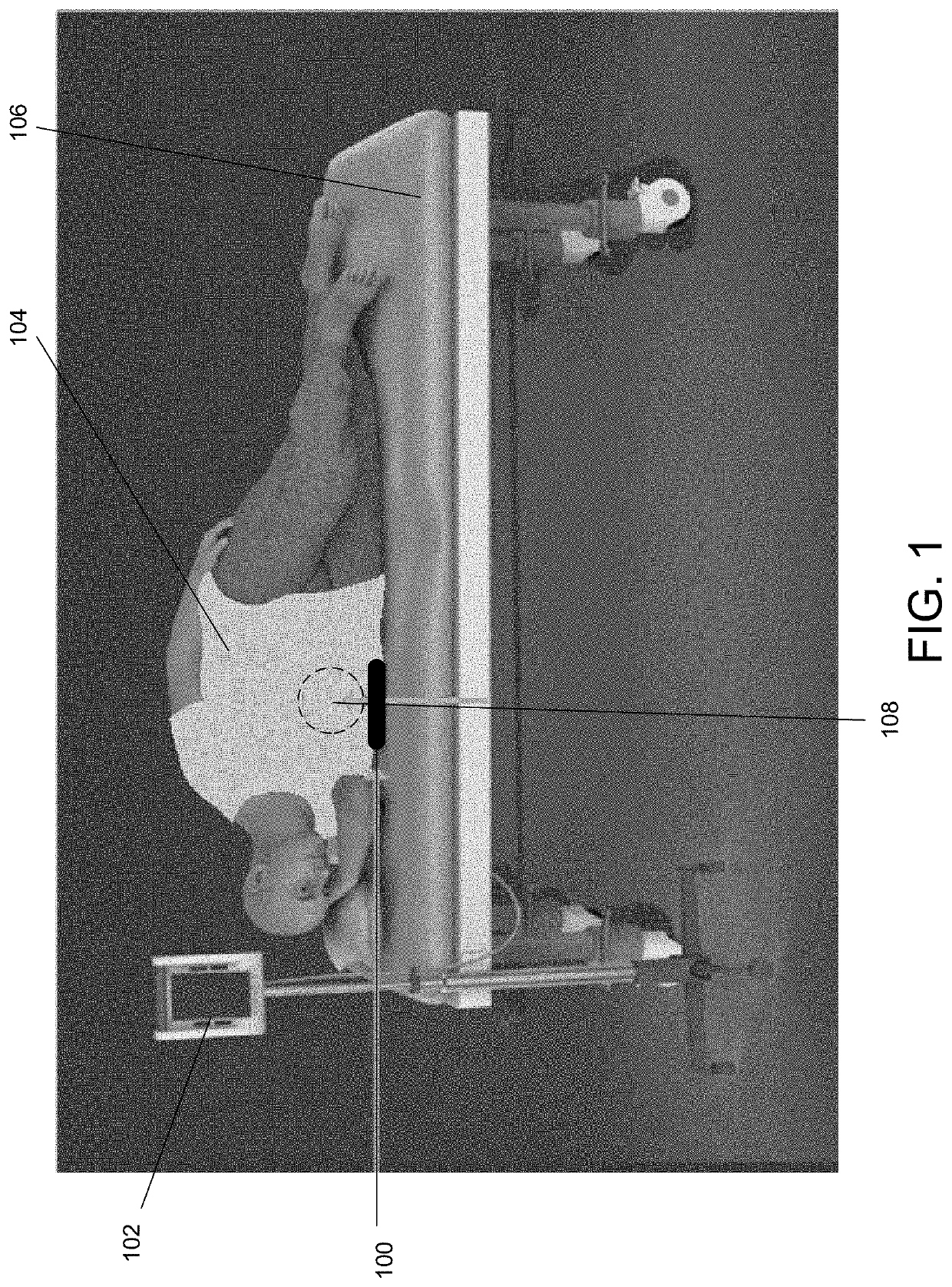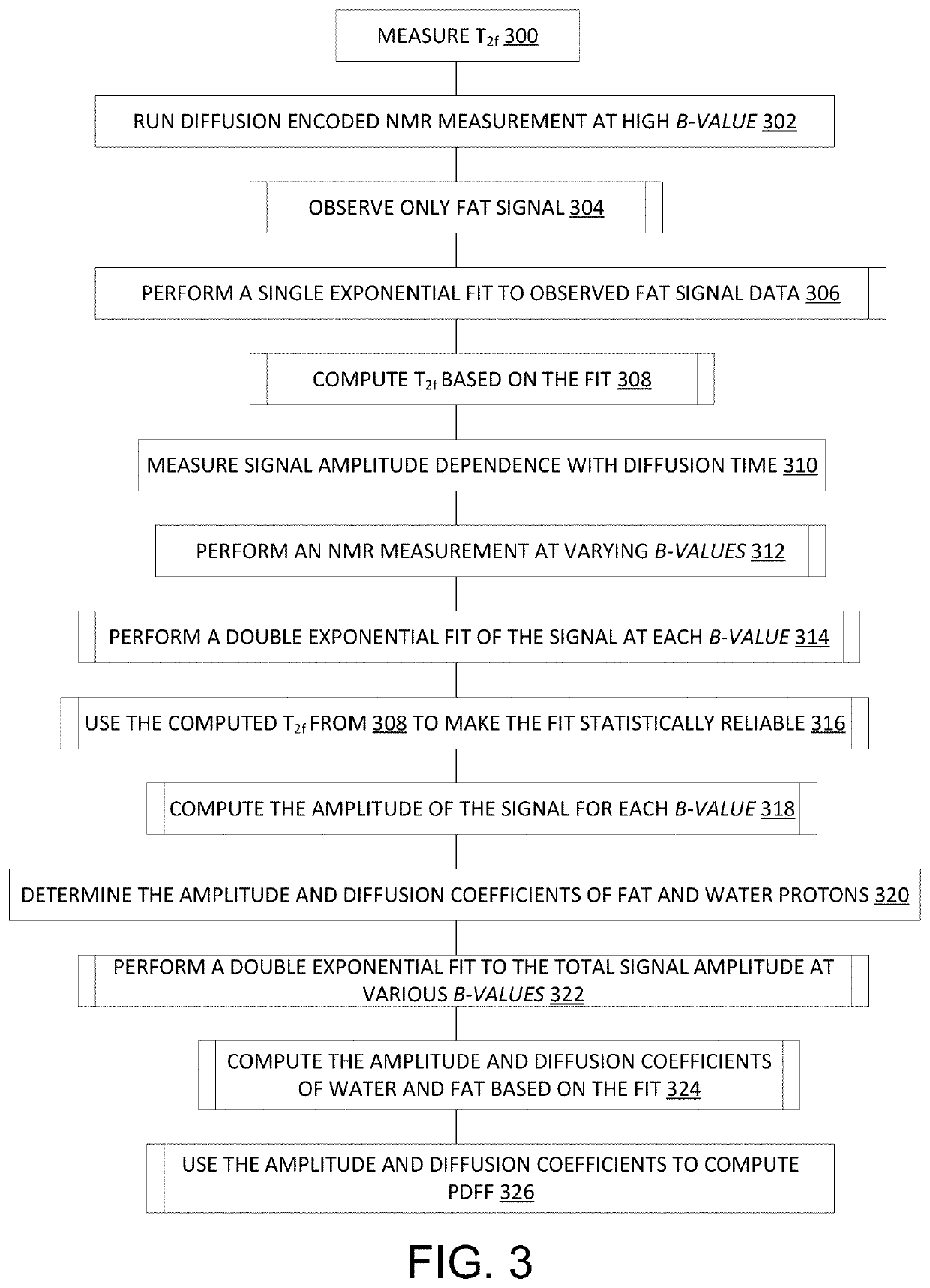Systems and methods for non-invasive fat composition measurement in an organ
a non-invasive, organ-based technology, applied in the direction of nmr measurement, instruments, applications, etc., can solve the problems of uncomfortable patients, high cost, and large space requirements of traditional methods for assessing the fat content of the liver,
- Summary
- Abstract
- Description
- Claims
- Application Information
AI Technical Summary
Benefits of technology
Problems solved by technology
Method used
Image
Examples
embodiment
Diffusion Based Separation Embodiment
[0040]Water and fat signals may be separated based on their diffusion coefficients. Diffusion coefficients for water and fat may be significantly different which may make this method effective to separate water and fat signals. It may be possible to suppress water signals while observing fat signals. The diffusion coefficient for water may be on the order of ten times higher than the diffusion coefficient of fat. Therefore, a clear separation of the NMR signals from the water protons and fat protons may be achieved. The signals may be differentiated by performing measurements in the presence of a magnetic field gradient. For example, a Carr-Purcell-Meiboom-Gill (“CPMG”) pulse sequence with different inter pulse spacing may be used. A CPMG sequence with a diffusion encoding preparation stage may also be used. Phase cycling of RF pulses and signal channels may be performed to eliminate unwanted spurious signals.
[0041]Signal amplitudes for varying d...
PUM
 Login to View More
Login to View More Abstract
Description
Claims
Application Information
 Login to View More
Login to View More - R&D
- Intellectual Property
- Life Sciences
- Materials
- Tech Scout
- Unparalleled Data Quality
- Higher Quality Content
- 60% Fewer Hallucinations
Browse by: Latest US Patents, China's latest patents, Technical Efficacy Thesaurus, Application Domain, Technology Topic, Popular Technical Reports.
© 2025 PatSnap. All rights reserved.Legal|Privacy policy|Modern Slavery Act Transparency Statement|Sitemap|About US| Contact US: help@patsnap.com



